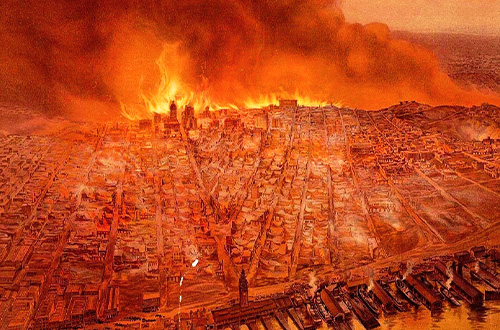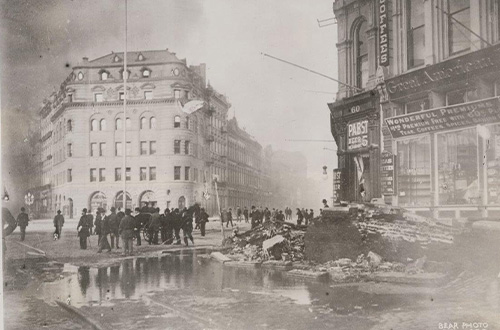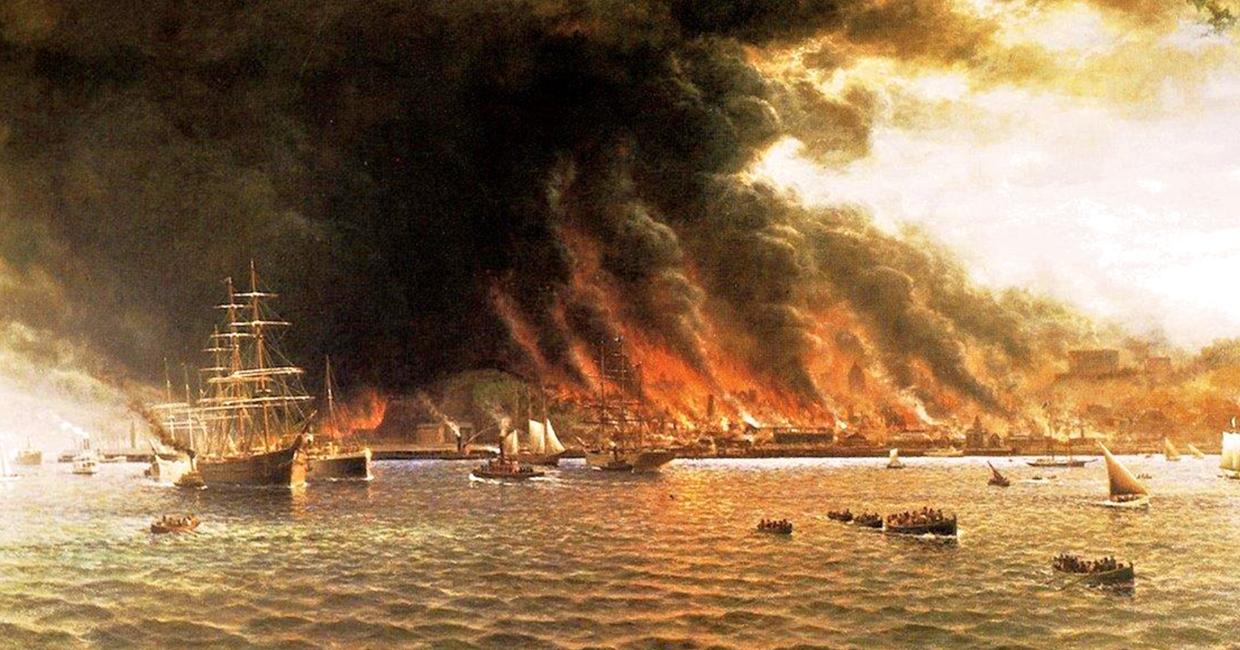On April 18, 1906, the ground shook all over the Bay Area as the San Andreas fault line shifted. Now, 118 years later, San Francisco braces for the anniversary of the 1906 Great Earthquake and Fire. The City was shaken up by a powerful 7.9 magnitude earthquake, destroying over four square miles and more than 28,000 buildings in San Francisco.

It devastated San Francisco. The earthquake triggered a massive fire fueled by collapsing structures and exacerbated by the failure of the water system. For three days flames ravaged the City, and while it has been estimated that 3,000 died, the actual death toll may never be known. The property loss amounted to a a staggering $524 million in 1906 dollars.
According to the Jack London Collier’s Weekly in May 1906, “On Wednesday morning at a quarter past five came the earthquake. A minute later the flames were leaping upward…There was no opposing the flames. There was no organization, no communication. All the cunning adjustments of a twentieth century city had been smashed by the earthquake…And the great water-mains had burst. All the shrewd contrivances and safeguards of man had been thrown out of gear by thirty seconds’ twitching of the earth-crust.”
In the aftermath, when the fire was finally extinguished, the City knew that they needed a secure, reliable source of water so nothing like this would ever happen again. Despite the tragedy, the aftermath spurred significant improvements in San Francisco's infrastructure and disaster response capabilities.
The Auxiliary Water Supply System
The 1906 earthquake and fire underscored the urgent need for a dedicated water supply system for firefighting. The existing system failed during the disaster, necessitating critical improvements. The Emergency Firefighting Water System (also known as the Auxiliary Water Supply System or AWSS), was built in 1913 as an independent high-pressure water supply system dedicated to fire protection.

At a cost of $5.2 million dollars, the system consists of a 135-mile pipeline network, a high elevation reservoir, two large capacity tanks, two pumping stations, fire boats, cisterns (underground water storage tanks), and Bay water intakes (suction connections). The system has unique features, including the ability to deliver water at much higher pressures and the ability to use unlimited water from the Bay.
SFPUC Steps In
In 2011, the San Francisco Public Utilities Commission (SFPUC) assumed responsibility for the Emergency Firefighting Water System to make long-lasting seismic and operational improvements. The upgrades to the City’s Emergency Firefighting Water System will help prepare San Francisco for multiple-alarm fires, natural disasters and the unpredictable.
Preparing for Disasters
While the SFPUC continues major infrastructure upgrades across our system to be more resilient, residents can also prepare for the next big quake before disaster strikes. Make an emergency communications plan and practice with your family. Keep phone numbers and meeting places updated and have an emergency contact that's located in outside of your region. Practice your emergency plan to ensure all members of your household know what to do, especially if you are not all in the same location.
Build or update your emergency kit. Keep an emergency kit at home, your vehicle or workspace. Include essentials like water, non-perishable food, battery-powered radio, flashlight, first aid kit, cash, batteries and prescription medication. Be sure to consider specific needs for all members in your household (e.g. babies, children, seniors, pets).
Store enough water for you and your family to last for 3-5 days. Each family member needs one gallon of water per day, and don't forget your pets. Store water in a dark, cool place. Find out more ways to stay prepared here.
While we have learned and are better prepared to face another great earthquake and fire, it’s important to look back at our history and how we can appreciate what we’ve accomplished in 118 years.


